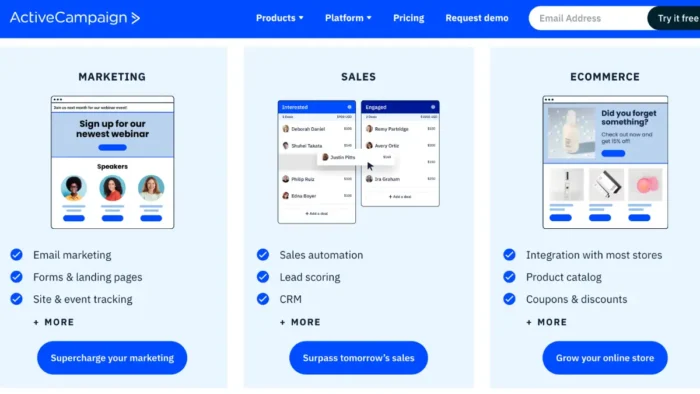Software as a Service (SaaS) has ushered in an era where businesses, regardless of size, can access top-tier software without the burdens of hefty upfront costs, tedious installations, or ongoing maintenance.
This transformation in the digital landscape has given birth to a multitude of SaaS models, with vertical SaaS startups standing out prominently. While horizontal SaaS casts a wide net, aiming to serve diverse sectors with a one-size-fits-all approach, vertical SaaS takes a more laser-focused strategy.
It zones in on the nuanced needs and challenges of specific industries, offering tailor-made solutions. However, this specialization raises an intriguing dilemma: At what point does this focused approach become overly restrictive? Dive with us into the intricacies of the vertical SaaS paradigm as we unravel this conundrum.
What Is Vertical SaaS?
In the ever-evolving world of SaaS, Vertical SaaS emerges as a paradigm of precision and customization. Unlike its broader counterparts, it hones in on the intricacies of individual industries, ensuring that the solutions provided are not just generic tools but bespoke assets finely tuned to sector-specific demands.
Consider a vertical SaaS for the healthcare realm, it would likely encompass features like telemedicine integrations, claim processing, and prescription management. In contrast, a platform designed for real estate might emphasize on lead tracking, property valuation algorithms, and digital contract signings.
It’s this deep-seated understanding and adaptation to particular industry hurdles that sets vertical SaaS apart, offering businesses tools that are not just functional but also intuitively aligned with their core operations.
Today, vertical SaaS solutions go a lot deeper, with tools and solutions aimed at particular types of businesses, let alone an entire industry. A great example of this is pest control software like Briostack, with features and functionality all aimed at the pest control business. This, however, begs the question, just how deep is too deep?
Benefits of Going Vertical
While targeting a narrower market might seem counterintuitive, it actually makes great sense in the increasingly competitive global SaaS landscape. It acts as a differentiator, and comes with a host of other benefits that we cover below.
Deep Expertise: One of the most significant advantages of vertical SaaS is the depth of expertise it provides.
Companies can develop specialized features and tools that cater to the exact requirements of an industry. This deep understanding can lead to better customer satisfaction and a stronger product-market fit.
Lesser Competition: By targeting a specific niche, vertical SaaS businesses often face less competition compared to horizontal SaaS platforms. This can lead to better market penetration and a more substantial customer base.
Higher Customer Loyalty: Customized solutions lead to higher customer satisfaction. When businesses find a tool tailored to their specific needs, they are less likely to switch, leading to increased customer loyalty and retention.
The Potential Pitfalls: How Narrow Is Too Narrow?
While the benefits of vertical SaaS are evident, there are potential challenges that entrepreneurs need to understand.
Limited Market Size: By nature, vertical SaaS targets a smaller audience. If the niche is too narrow, the business might struggle to grow or even sustain itself.
Increased Vulnerability: Being dependent on a specific industry can be risky. If the industry faces a downturn, the vertical SaaS company will likely feel the impact.
Barrier to Diversification: Once a company becomes an industry-specific solution provider, diversifying into other sectors can be challenging. The brand may become too associated with one industry, making expansion difficult.

Finding The Sweet Spot
Identifying the optimal niche size in the vertical SaaS domain is akin to striking a delicate balance. Here are some refined strategies to navigate this challenge:
Market Research: This is the bedrock of any successful venture. Delve deeper than surface statistics; dissect the competitive landscape, potential market disruptors, and emerging technologies in your target industry. Analyze not just the current market dynamics but also forecasted shifts.
Pilot Testing: Instead of a broad launch, consider a phased approach. Engage early adopters, foster a feedback-rich environment, and employ agile methodologies to iterate your solution based on real-world usage and challenges.
Flexibility In Design: Remember, while specialization is key, rigidity can be a downfall. Architect your solution to be modular, allowing components to be added or removed with ease.
This modular approach can aid in catering to sub-niches within your chosen vertical or adjusting to unforeseen industry shifts.
Stay Updated: The only constant is change. Regularly engage with industry thought leaders, attend sector-specific seminars, and subscribe to relevant publications.
This proactive approach ensures your solution remains not just relevant but pioneering in addressing the evolving demands of your chosen industry.
The Future of Vertical SaaS
The SaaS industry is continually evolving, and the rise of vertical SaaS is a testament to that. As businesses increasingly look for specialized solutions, the demand for industry-specific platforms will likely grow.
However, for vertical SaaS companies to thrive, finding the right balance is crucial. While it’s beneficial to cater to a niche, it’s equally essential to ensure the niche isn’t so narrow that it stifles growth.
In conclusion, the vertical SaaS business model offers immense potential for businesses willing to invest the time in understanding a specific industry’s nuances.
By finding the sweet spot between specialization and market size, companies can leverage the benefits of vertical SaaS while mitigating its challenges. The future looks promising for those who can navigate this delicate balance.





